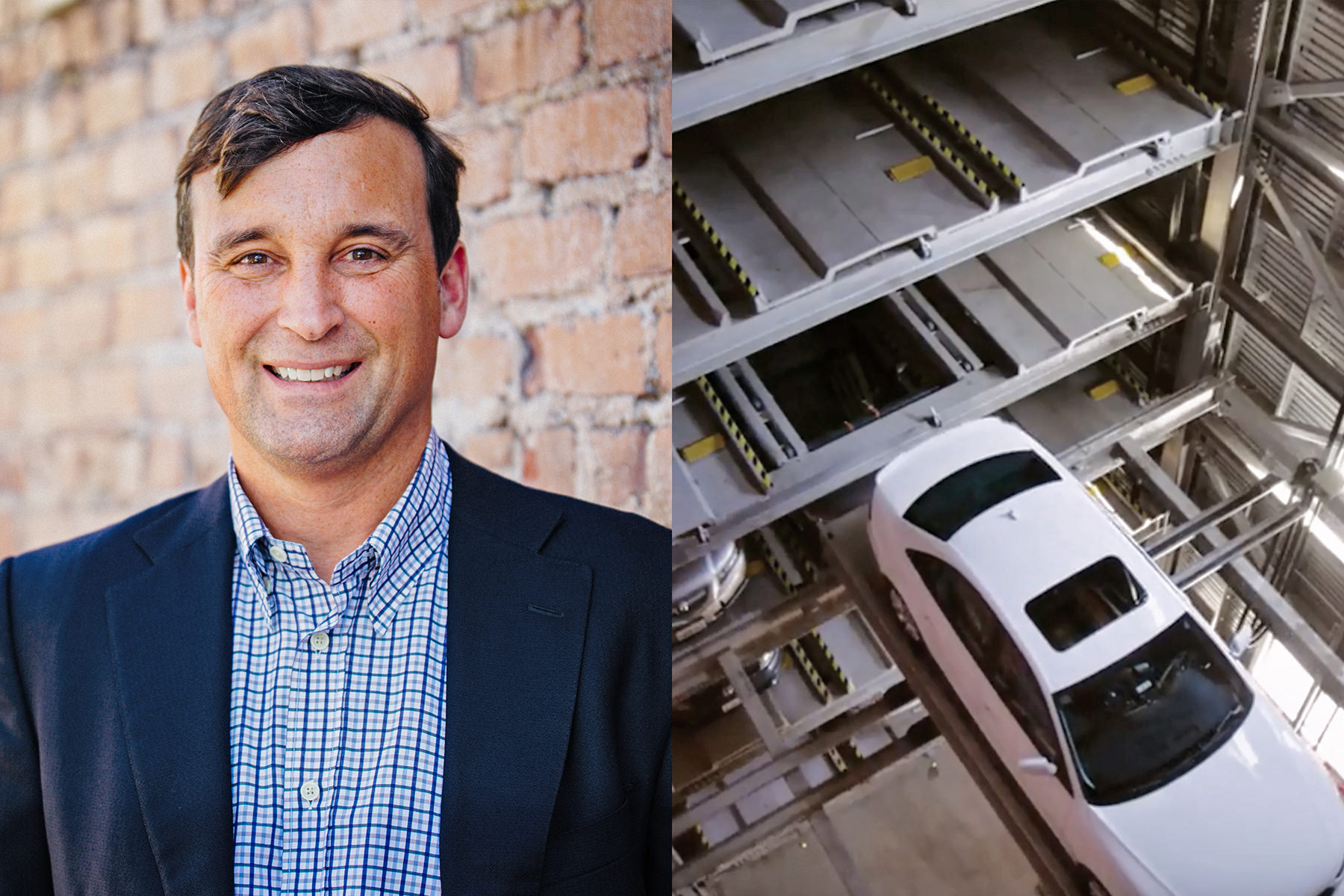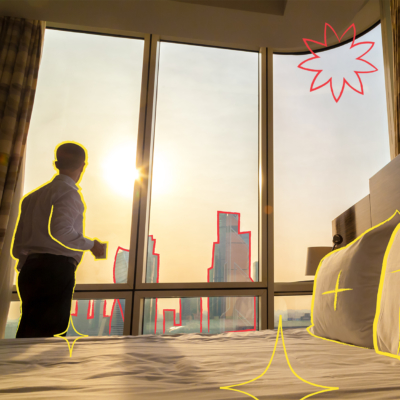Space is at an ever-increasing premium when it comes to high-density developments, yet dedicated parking remains a priority for most prospective city-dwelling buyers. How can builders possibly fit more cars into a even smaller footprint without spending a fortune? We talked to high-tech parking expert Scott Gable, CEO of City Lift Parking to see how developers might start to reimagine the future of vehicle storage.
How do you see parking in high-density areas changing right now?
SG: In major cities, square footage comes at a premium. Efficient solutions like automated parking can help solve for some of our density issues.
How would you describe automated parking to someone that is unfamiliar?
SG: Automated parking is equipment that electronically and mechanically stacks cars on top of each other with maximum efficiency in mind. Depending on the technology, a developer might install something called a puzzle lift . Each resident is given an assigned parking space and a fob ( a small, physical security token used to securely authenticate users). When you pull up, the system calls your specific space to ground level, a security gate opens, you pull the vehicle carefully into the space, close the security gate, and the space is electronically stored within the building’s parking grid… ready to be called back again when it’s time to leave.
The machine moves the cars around, so that it’s easier to get to your vehicle instantly. Like a robot valet, but a lot faster. Another kind of high-density parking unit is something called a stacker , where you pull a vehicle into a parking space, where it is lifted and stacked into a vertical lineup. The problem with this kind of space-efficient design is that it takes too much time for people to pull each vehicle down for retrieval, because they have to move all vehicles parked below.
How does this high-tech competition stack up against conventional decks?
SG: Conventional garages are becoming obsolete for many urban areas – they’re expensive, space inefficient, have very rigid design requirements, are often heavy, not adaptable, and create greenhouse gas hotspots. A residential development project in Oakland is what actually inspired the beginning of our company—I met a developer there in 2015 who pointed out that the fundamental economics of building an apartment complex have changed. We partnered up with the goal to create something better: a hyper-efficient parking system for high-density areas, using manufacturing processes and equipment that was already in place for storage systems and parking in Asia and Europe.
Where does something like automated parking make the most sense?
SG: There are a broad range of markets for automated parking: apartment buildings, offices, mass transit hubs, hospitals, etc. And in the future, they make lots of sense as storage and charging locations for autonomous vehicle fleets. It doesn’t really make sense out in a rural area, where you have a big, rectangular space and you’re going to build a garage for maybe 1,000 vehicles? It’s not as cost-competitive to build something beyond a lot in that situation. Somewhere with extremely high peak demand, where everyone shows up and leaves all at once (like a stadium or theater) doesn’t really make much sense either. Really, it works best in high-density areas where residential and commercial office space is in demand.
How do automated parking systems reduce construction costs?
SG: Automated parking lift systems are making projects economically viable that might not be otherwise: in most cases they are constructed in 40-80% less space, are relatively lighter, cheaper and faster to build than a traditional parking deck, and are ultimately adaptable for future repurposing of the space—no matter what the transportation might look like tomorrow. The square footage that is saved by using an automated system can easily be reallocated to build more units, to create common areas, or for retail space—something that can add more value to the project than parking does. Another benefit to this system is that it actually lowers the cost of construction. It specifically reduces the amount of concrete used in construction, and in most cases it reduces the need for further below-ground excavation to create more parking. This lightening of the overall weight of the building can have a direct impact on how large the pylons need to be, and in cases where we’re building on top of landfill, this weight reduction is critical. It also creates some major cost savings.
Can a parking system be truly modular?
SG: Many developers live in a world where they want to offer parking today, but they’re concerned that residents may need less parking tomorrow. Because of that, they don’t want to invest in conventional parking infrastructure (with lots of ramping and low ceilings). This option gives them a nice, tall rectangular box-shaped unit that can be easily assembled within or removed from the building, making it easier for developers to repurpose the space effectively if usage needs changes over time. There are developers that are close to transit that are trying to get away with little to no parking. They’re really the only cost competition in this particular market at this point.
What do you see for the road ahead?
SG: Modular parking structures really make sense for the future, and that’s what we’re focused on at City Lift. We’re working to reinvent systems for the parking industry in the same way modular design has made a huge impact on the construction industry—ultimately with the goal of creating solutions that are efficient, simple for construction teams to integrate, and easy for residents to use. Less space, more freedom.
Learn more about City Lift at cityliftparking.com.




